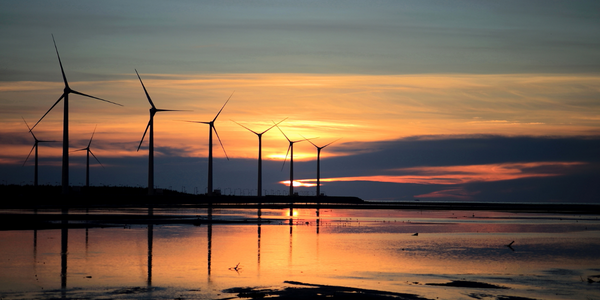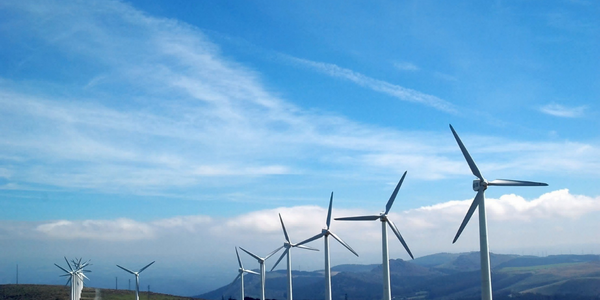技术
- 应用基础设施与中间件 - 事件驱动型应用
- 传感器 - 电表
适用行业
- 可再生能源
- 公用事业
适用功能
- 销售与市场营销
用例
- 施工管理
- 基础设施检查
服务
- 云规划/设计/实施服务
- 系统集成
关于客户
A2A 是一家意大利公用事业提供商,为超过 250 万客户提供电力、天然气、清洁水和废物收集等基本服务。该公司拥有超过 12,000 名员工,致力于成为一家“生命”公司,通过致力于可再生能源和循环经济,让客户的生活成为可能,同时保护自然世界的生命。
挑战
A2A 是一家意大利公用事业提供商,面临着扩大业务规模和满足 250 万客户需求的挑战,同时还要努力实现联合国设定的 2030 年可持续发展目标。该公司需要一个数据驱动、以客户为中心的战略支持其增长并适应不断变化的能源市场。
解决方案
A2A 在 Google Cloud 上实施了强大的数据解决方案来应对挑战。该公司使用 Anthos、BigQuery、Cloud Composer、Dataflow、Compute Engine 等 Google Cloud 产品来创建可扩展且响应迅速的客户分析平台。在 Google Cloud 推动者 TIM Group 和 Accenture 的集成专业知识的帮助下,A2A 从单一基础设施迁移到可扩展的微服务。 Atos 开发了“SAP S/4HANA for Utilities”实施方案,作为云端新的垂直计费系统。该团队利用 Google Kubernetes Engine、Google Cloud 负载平衡和 Google Cloud 永久磁盘进行编排、备份和存储。 A2A 还将来自 SAP、CRM、Google Analytics 和 Google Ads 等各种来源的数据整合到基于 Google BigQuery 和 Google Cloud SQL 的统一数据湖中。他们使用 Google Cloud Dataflow 和 Google Cloud Composer 来处理和编排数据管道。此外,A2A 利用 Google Cloud Anthos 作为托管服务来确保跨平台操作的一致性。
运营影响
数量效益

Case Study missing?
Start adding your own!
Register with your work email and create a new case study profile for your business.
相关案例.

Case Study
Remote Monitoring & Predictive Maintenance App for a Solar Energy System
The maintenance & tracking of various modules was an overhead for the customer due to the huge labor costs involved. Being an advanced solar solutions provider, they wanted to ensure early detection of issues and provide the best-in-class customer experience. Hence they wanted to automate the whole process.

Case Study
Vestas: Turning Climate into Capital with Big Data
Making wind a reliable source of energy depends greatly on the placement of the wind turbines used to produce electricity. Turbulence is a significant factor as it strains turbine components, making them more likely to fail. Vestas wanted to pinpoint the optimal location for wind turbines to maximize power generation and reduce energy costs.

Case Study
IoT Solutions for Smart City | Internet of Things Case Study
There were several challenges faced: It is challenging to build an appliance that can withstand a wide range of voltage fluctuations from as low at 90v to as high as 320v. Since the device would be installed in remote locations, its resilience was of paramount importance. The device would have to deal with poor network coverage and have the ability to store and re-transmit data if networks were not available, which is often the case in rural India. The device could store up to 30 days of data.

Case Study
Automation of the Oguz-Gabala-Baku water pipeline, Azerbaijan
The Oguz-Gabala-Baku water pipeline project dates back to plans from the 1970’s. Baku’s growth was historically driven by the booming oil industry and required the import of drinking water from outside of the city. Before the construction of the pipeline, some 60 percent of the city’s households received water for only a few hours daily. After completion of the project, 75 percent of the two million Baku residents are now served around the clock with potable water, based on World Health Organization (WHO) standards. The 262-kilometer pipeline requires no pumping station, but uses the altitude differences between the Caucasian mountains and the capital to supply 432,000 m³/d to the Ceyranbatan water reservoir. To the people of Baku, the pipeline is “the most important project not only in 2010, but of the last 20 years.”

Case Study
Siemens Wind Power
Wind provides clean, renewable energy. The core concept is simple: wind turbines spin blades to generate power. However, today's systems are anything but simple. Modern wind turbines have blades that sweep a 120 meter circle, cost more than 1 million dollars and generate multiple megawatts of power. Each turbine may include up to 1,000 sensors and actuators – integrating strain gages, bearing monitors and power conditioning technology. The turbine can control blade speed and power generation by altering the blade pitch and power extraction. Controlling the turbine is a sophisticated job requiring many cooperating processors closing high-speed loops and implementing intelligent monitoring and optimization algorithms. But the real challenge is integrating these turbines so that they work together. A wind farm may include hundreds of turbines. They are often installed in difficult-to-access locations at sea. The farm must implement a fundamentally and truly distributed control system. Like all power systems, the goal of the farm is to match generation to load. A farm with hundreds of turbines must optimize that load by balancing the loading and generation across a wide geography. Wind, of course, is dynamic. Almost every picture of a wind farm shows a calm sea and a setting sun. But things get challenging when a storm goes through the wind farm. In a storm, the control system must decide how to take energy out of gusts to generate constant power. It must intelligently balance load across many turbines. And a critical consideration is the loading and potential damage to a half-billion-dollar installed asset. This is no environment for a slow or undependable control system. Reliability and performance are crucial.

Case Study
GPRS Mobile Network for Smart Metering
Around the world, the electricity supply industry is turning to ‘smart’ meters to lower costs, reduce emissions and improve the management of customer supplies. Smart meters collect detailed consumption information and using this feedback consumers can better understand their energy usage which in turn enables them to modify their consumption to save money and help to cut carbon emissions. A smart meter can be defined in many ways, but generally includes an element of two-way communication between the household meter and the utility provider to efficiently collect detailed energy usage data. Some implementations include consumer feedback beyond the energy bill to include online web data, SMS text messages or an information display in consumers’ premises. Providing a cost-effective, reliable communications mechanism is one of the most challenging aspects of a smart meter implementation. In New Zealand, the utilities have embraced smart metering and designed cost effective ways for it to be implemented. The New Zealand government has encouraged such a move to smart metering by ensuring the energy legislation is consistent with the delivery of benefits to the consumer while allowing innovation in this area. On the ground, AMS is a leader in the deployment of smart metering and associated services. Several of New Zealand’s energy retailers were looking for smart metering services for their residential and small business customers which will eventually account for over 500,000 meters when the multi-year national deployment program is concluded. To respond to these requirements, AMS needed to put together a solution that included data communications between each meter and the central data collection point and the solution proposed by Vodafone satisfied that requirement.







